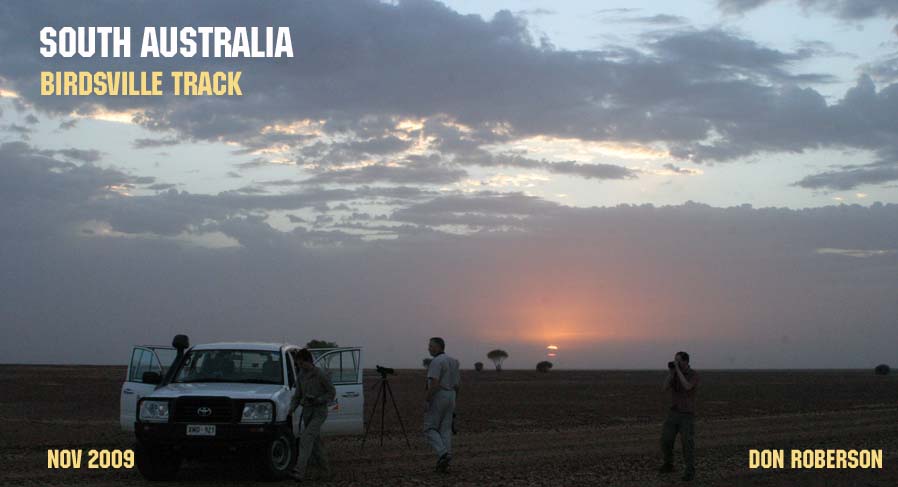
Wikipedia describes the Birdsville Track as "a notable outback road in Australia. The 517 km track runs from Marree, a small town in northern South Australia, north across the Tirari Desert and Sturt Stony Desert, ending in Birdsville in south western Queensland. In former years the track was of a very poor quality and suitable only for high-clearance four-wheel drive vehicles, but it has been upgraded to a full-scale dirt road and is now a popular tourist route. The path traverses the driest part of the country with less than an average 100 mm of rainfall annually. [Ironically, about half that amount fell near Lyndhurst, near the south end of the Track, on our final day... see below.] The area is extremely barren, dry and isolated, and anyone wishing to travel the track must carry fresh water, supplies, fuel, and spare parts." I'd always wanted to visit this remote region, and Peter Waanders' "Five Grasswrens in Five Days" tour was an opportunity. We had initially been scheduled for the Strzelecki Track, which is farther south and east, and a loop route, but the known presence of some eruptive birds far up the Birdsville Track prompted an itinerary change. We endured long hours on the road (and Peter did all the driving) over the stony gibber desert plains (below left) and into more arid, grassy vistas farther up the Track (below right). |
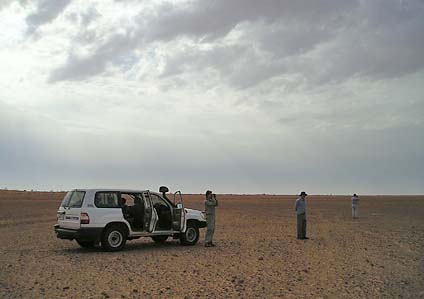 |
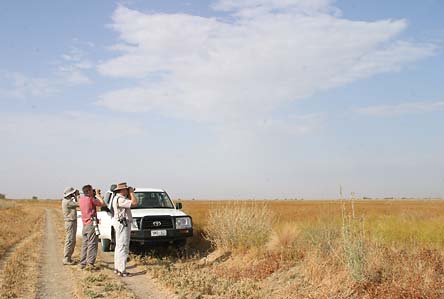 |
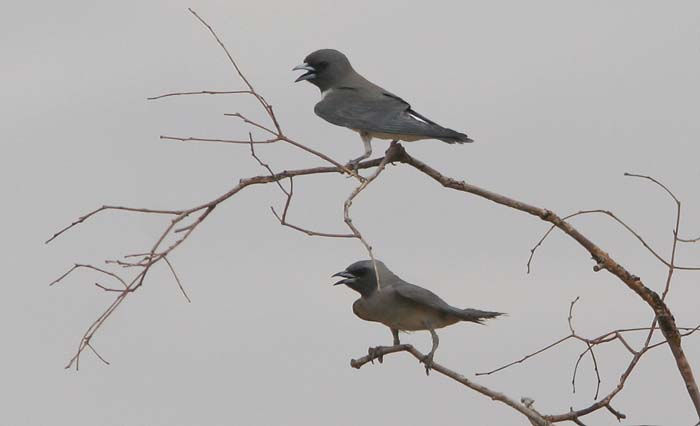
We went up the Birdsville Track in exceedingly hot weather, reaching 100°F during the day. Many birds encountered in mid-day were panting with beaks open [left, White-breasted (top) & Masked Woodswallow (bottom)].
When coming down the Track on 21 Nov, we ran into heavy summer rains, during the track into a quagmire (below left). After finally reaching pavement, flash floods raging across the road (below right; up to 1m = 3 ft deep) left us stranded in Leigh Creek for the night.
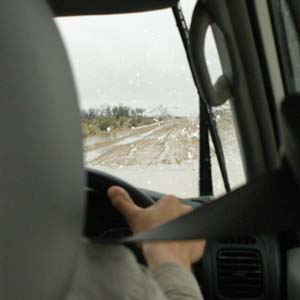 |
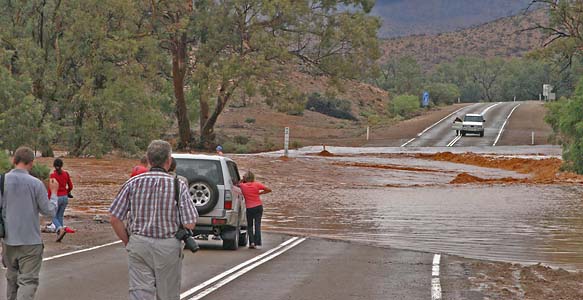 |
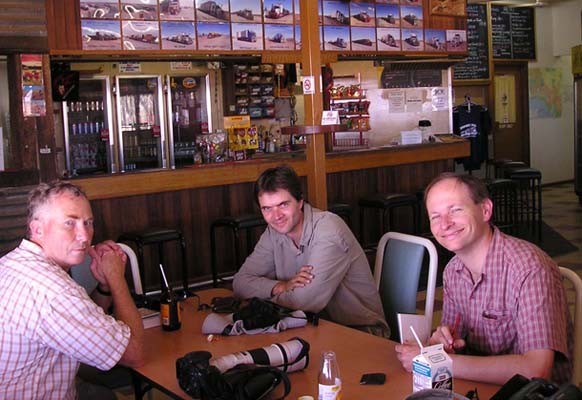
Our accommodations for a couple days were small and very basic rooms attached to outback pubs at Mungerannie and had been planned for Lyndhurst (right; Bruce, Peter & Murray at the Lyndhurst pub), but the latter plan was washed out by the rains when we pushed farther south. Not that the rooms mattered much, as we were up by 4 a.m. most days. Fortunately, given the steaming days before the rains, we did not have occasion to sing the Australian folk tune "The Pub with No Beer." Indeed, the rest of the crew seemed bewildered by my efforts to sing them any Australian folk tune at all . . .
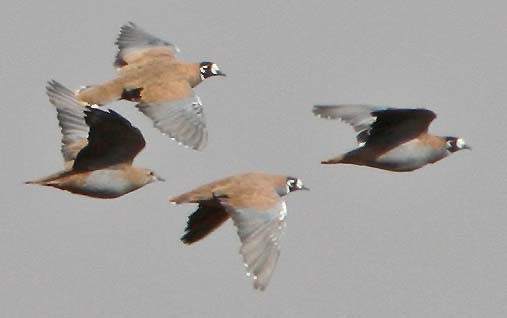
Certainly the most impressive bird phenomena encountered were the huge numbers of Flock Bronzewing (left & below). At times they darkened the sky as Passenger Pigeons must have once done. We estimated a conservative 8000 birds over a mile stretch.


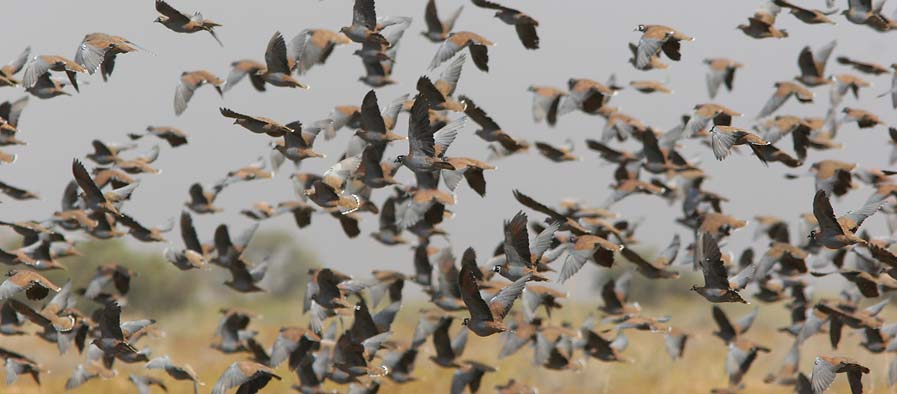
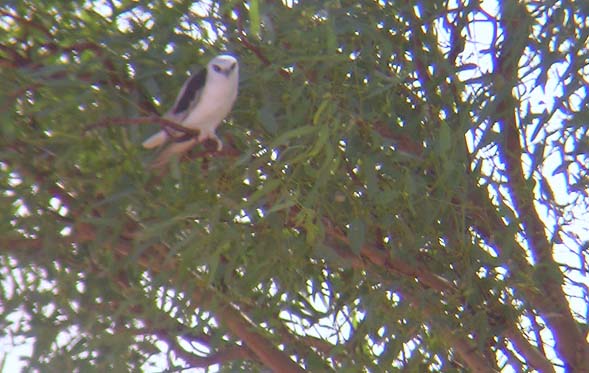
Another ephemeral encounter was visiting a nesting site for Letter-winged Kite (digiscoped in nest tree, right, and in flight, below); we observed two pairs and two nests.
Other raptors were in abundance in the area, including lots of Black Kite and Brown Falcon, a pair of Black Falcon (second row below, left), and Spotted Harrier (second row below, right).
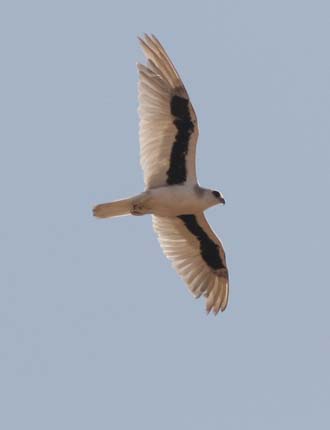 |
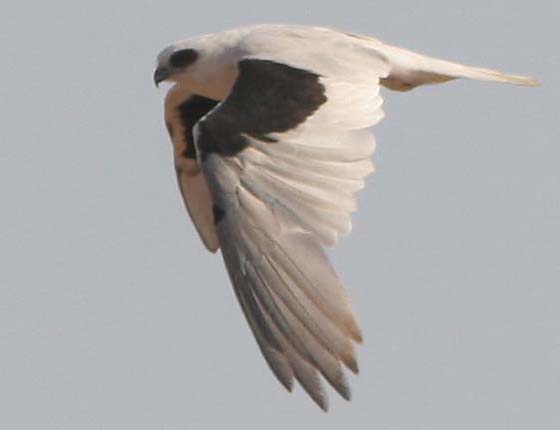 |
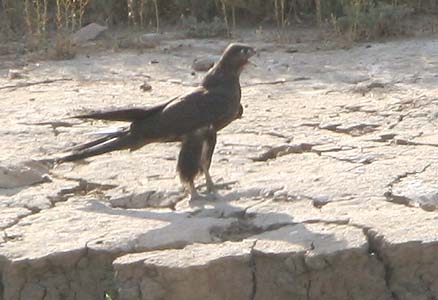 |
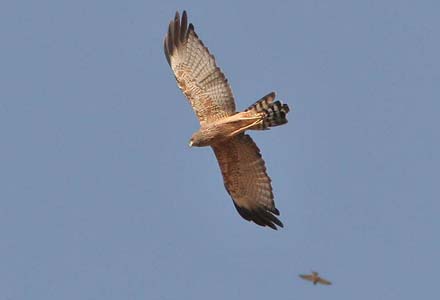 |
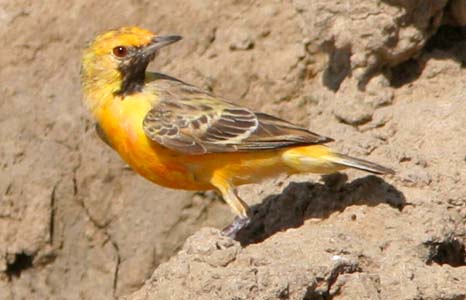
We did very well on Australian chats, recording five species on the trip. Four species were new for me: Yellow Chat (male at Pandieburra Bore) and these three photographed: Orange (right), Crimson (below left), and Gibber (below right). The latter is restricted to gibber plains — flat stony plains that stretch out 'forever' (second row below).
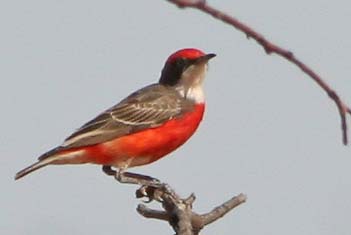 |
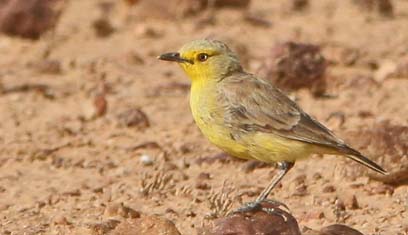 |
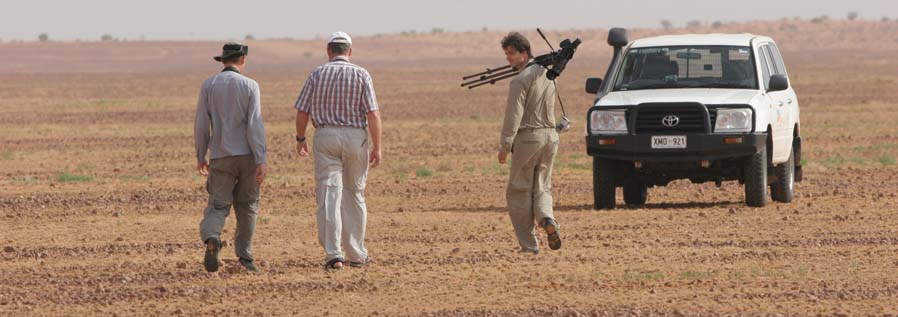
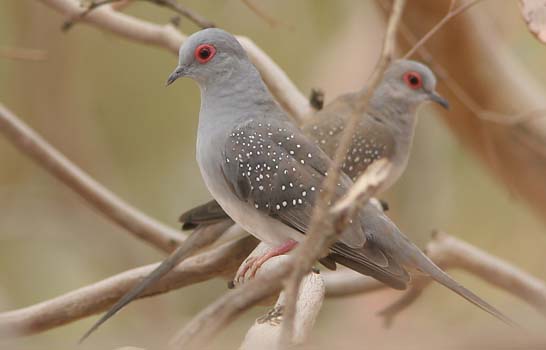
We visited small wetlands in the arid desert, including Pandiburra Bore (second row below) where scalding hot artesian water shoots from a runaway bore and has created a marsh in the middle of nowhere. Interesting waders here included Ruff and Oriental Plover. The wetlands visited attracted a wide variety of birds: Diamond Dove (pair, left, at Mungerannie) to Black-fronted Dotterel (below left) to Brolga Crane (below right).
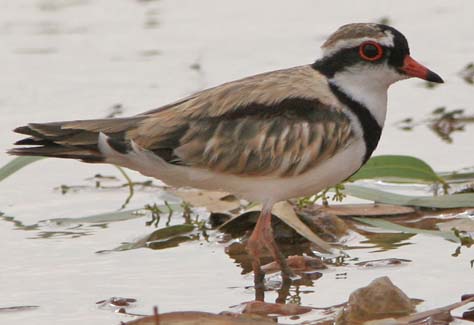 |
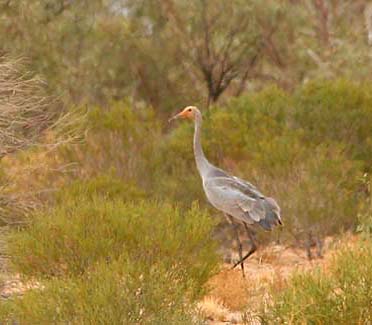 |

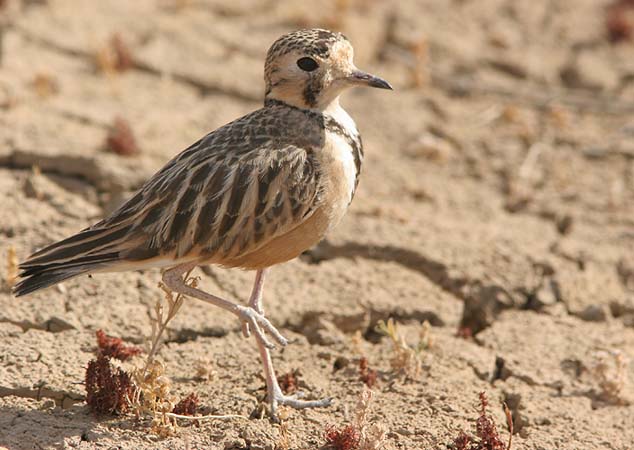
Finally, the arid moonscape yielded more prized specialties, including Inland Dotterel (left, near Pandiburra Bore). We ended up seeing this most-sought inland wader at 3 sites, including a flock of 25 on the gibber plain with its Gibber Chat (see above). While searching for Eyrean Grasswren, we also found a nice male Banded Whiteface (below, near Lyndhurst), a dust-colored bird in a dust-covered tree in a dust-red landscape.
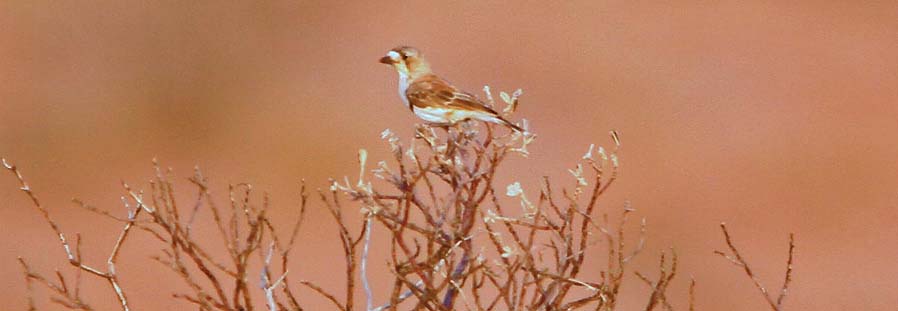
South Australia MALLEE, FLINDERS & COASTAL HIGHLIGHTS |
|
South Australia BIRDSVILLE TRACK HIGHLIGHTS |
|
page created 30 Nov 2009
|
© Don Roberson 2009 |